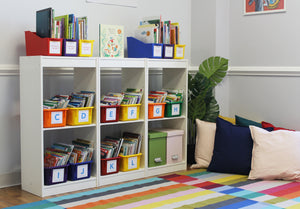Six tips to get students to speak in your language - Part 1
“The kids have so much to talk about - except it’s never in my language!” I remember saying as an ESOL and then a dual language teacher. Little by little, I gained more understanding of what linguistic scaffolding really meant: use visuals, give them sentence stems, act it out… Yes, all of these scaffolds are important, but how do you get students to speak in your target language when they have been online since March? What other scaffolds can we give them that will encourage faster and more accurate production of linguistic skills?
In an ESOL or dual language classroom, we always talk about content and language goals. Content goals are the skills and knowledge students need to acquire to master their subject matter. Those are typically drawn from standards. Language goals are the vocabulary words associated with that content.
When facilitating professional learning courses for teachers, I present productive language goals. Productive language goals are the words and sentences that a student will need to be able to talk about, write about, explain, argue and discuss the content. Notice that the student isn’t just listening to language, but actually producing it.
This week and next week, I’ll give you six tips on how to encourage more productive language from your students, and not just receptive language where they listen to you.
1. Set Linguistic Boundaries
A few months ago, I posted about 3 Ways to Create Opportunities to Participate Online. I presented three types of social interactions teachers can orchestrate to draw their students back to the classroom. One of the tips I gave was to let students participate in their native tongue during these social times. That being said, there are times when it’s imperative for your students to speak in the language of instruction.
Kids need to know when they can speak in their strongest language, and when they should work extra hard to communicate in the language they’re learning. This means that you need to be consistent in how you reinforce that. Establish a language policy, and make it visual so students can understand it. Your language policy might be that during social time, students can use any language. However, during content time, students must use your language, or at least must make every effort to do so.

A simple poster like the one above can be posted behind you while you are teaching so you can point to it while students are on Zoom with you.
Positive reinforcement will also help students “hear” the linguistic boundaries.
2. Teach Tech Vocab
In class, students face simple barriers like not knowing how to ask for help or not knowing how to say “May I go to the bathroom?” Learning online adds an extra layer of linguistic complexity. Now, these same students need to be able to say things such as “I can’t hear you. You’re on mute.” “The connection is bad. I’m going to try to log back on.”

These are charts students should post on the walls of their workspaces. You can download these in Spanish and English. Teach this to students, and always hold them accountable by sharing a link to the printable poster for them to refer to. Giving students the basic vocabulary needed to operate online makes them feel empowered to say more, and makes technology less daunting.
3. Match Sentence Stems with Fillers
Sentence stems or sentence frames or sentence starters. They’re all the same: language structures we use frequently or with a very specific purpose. Some examples include:
- Language Arts: I noticed that… It makes me wonder if…
- Social Studies: __________ and __________ led to _________ .
- Science: Why is it that _________? How come ________?
As I have observed classes across different districts, I’ve seen many teachers teach sentence stems online, and I have seen numerous students use them. However, students find the most success when they are also given fillers. What are fillers? Fillers are the words a student may (or may not) fill in the blank. Fillers are most useful when there are a few options to choose from - some of which are correct, others are not. It helps students practice critical thinking.
 An example of first grade productive language goals.
An example of first grade productive language goals.
 An example of fourth grade productive language goals.
An example of fourth grade productive language goals.
Stay tuned for three more tips next week, and let me know what other tricks have helped your students participate in the language of instruction during online learning.
Feel free to subscribe to the blog here!
marie



Leave a comment